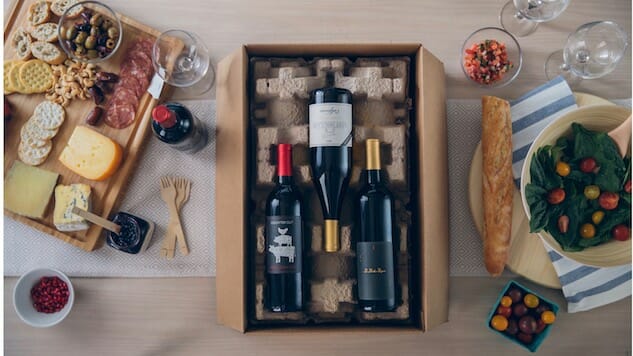Decoding Online Wine-Clubs: What’s the Deal with Firstleaf and Do I Want to Join?
Photo via Firstleaf
There are a multitude of wine curating, aggregating and personalizing services out there, each with a slightly different mission and a slightly different model and a slightly different algorithm. There are pros and cons to each. So here’s some prose on the pros (and cons) from a semi-pro who will not con you.
Firstleaf is a service that hones selections based on your reviews, and sends you regular shipments of things you might not otherwise even know you were looking for. It self-identifies as a “wine club,” and the idea is that as you receive and rate wines and the curators use that data to anticipate what you might like to try next.
What’s good? First of all, the wines are, actually. I tried six and there was not a lemon in the bunch. Also the pricing: Firstleaf sources on a “grape-to-glass” model that they say cuts out middlemen (they, obviously, are the middlemen) and passes savings to the consumer. I was not familiar with any of the wines I tried before they were sent, so I have to take it on faith that I got them for half price (no reason to believe I didn’t; the markup on wine in retail situations can be amazeballs). The price-to-quality ratio was actually quite attractive across the board. I tried both whites and reds, domestic and European (they source wines from pretty much everywhere wine is produced). They have a fairly broad variety and a lot of wines you won’t find at BevMo. At least not labeled as such. And you can totally control how often you get shipments, which is great if, like most of us, your budget and liver capacity are not infinite.
So all that’s excellent. According to their website they also give customer feedback to the winemakers to prompt “innovation” that ostensibly makes these winemakers work even harder to give you what you want. Personally I find that particular claim both pointless and specious, as I have met what must be described as “a crap-ton” of winemakers and exactly zero of them have ever clamored for notes from the peanut gallery on how to make their product taste better or cost less. But it’s a nice idea, that a feedback loop develops between consumer and producer.
-

-

-

-

-

-

-

-

-

-

-

-

-

-

-

-

-

-

-

-

-

-

-

-

-

-

-

-

-

-

-

-

-

-

-

-

-

-

-

-








































